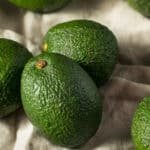Crab sticks are a popular appetizer or snack for many people. They can be found in sushi, sandwiches, and salads. However, there is a lot of confusion about whether crab sticks healthy or not.

Some people think that since they are processed, it means they aren’t good for you. But others say that if you take the time to find a brand without additives, then crab sticks can be an excellent source of protein and omega-3s.
So what’s the verdict? Let’s break it down…
Are Crab Sticks Real Crab?

Crab sticks, imitation crabmeat, seafood sticks (originally called kanikama in Japan) are a type of processed fish made from finely ground white fish (surimi) and starch. For these types of fish, it is shaped and cured to look like the leg meat of a snow crab or Japanese spider crab.
The stick is food that uses fish meat to imitate shellfish meat. It is not made of fresh crab meat.
Where Did Crab Sticks Originate from?
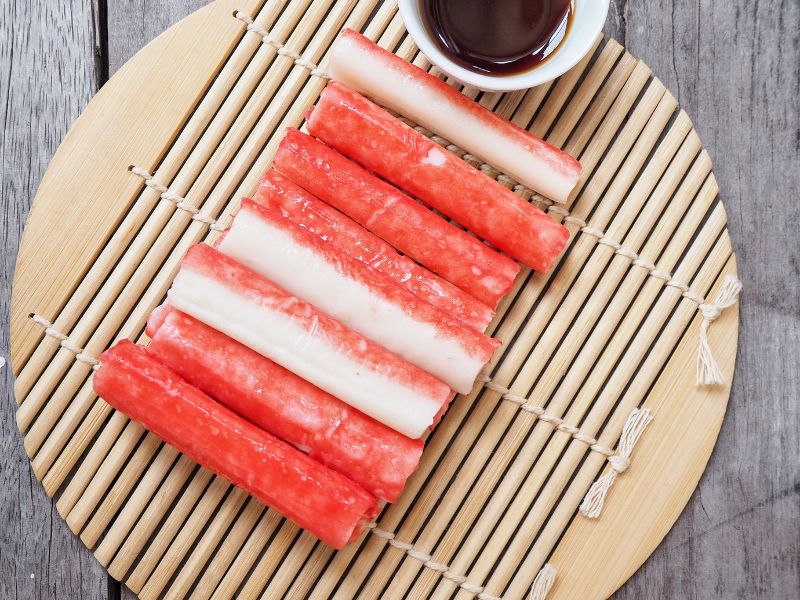
In 1974, Sugiyo Co., Ltd. of Japan first made and patented the flake-type imitation crab meat called Kanikama. In 1975, Osaki Suisan Co., Ltd., of Japan first made and patented imitation crab sticks.
The Berelson Company from San Francisco, California, US worked with Sugiyo in 1977 and introduced them to people around the world.
Kanikama is still the common name in Japan. But internationally, they are marketed under different names, such as Krab Sticks, Ocean Sticks, Sea Legs, and Imitation Crab Sticks.
Legal restrictions now prevent these imitation crab products from being called “Crab Sticks”. They usually do not have crab meat.
What’s in Crab Sticks?

Most crab sticks today are made from Alaska pollock. The Alaskan Pollock comes from the North Pacific Ocean.
The common ingredient in imitation crab is water, egg whites, wheat starch, soy protein sometimes, sugars like sorbitol and sucrose, various vegetable oils salt and natural dyes.
Crabmeat is flavored with either natural or artificial crab flavorings and then coated in a layer of red food coloring.
What Are Crab Sticks Usually Used for?
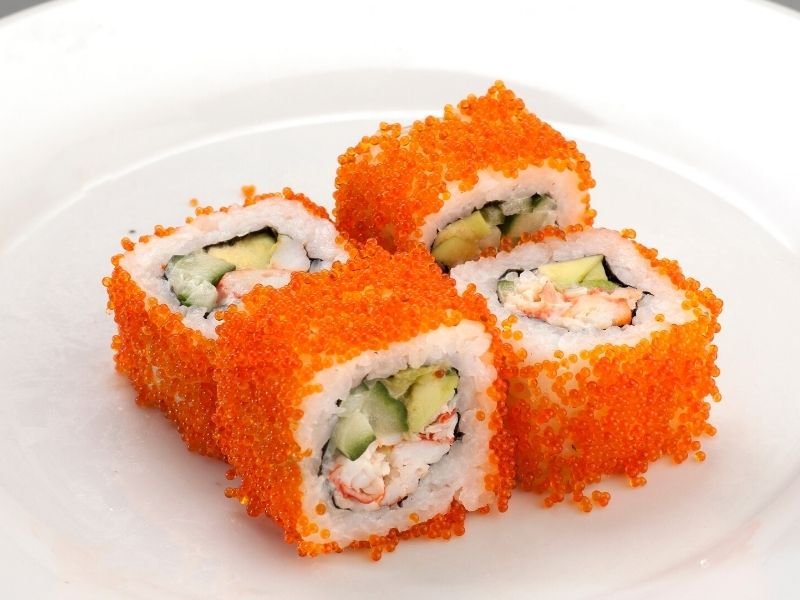
Crab sticks are popular in Asian countries and in the US. They are used in many different types of food.
Crab sticks are often used as an appetizer or snack or crab cakes, but they can also be served with a spicy and sweet teriyaki sauce. They might be served with vinegared seaweed salad (nori), wasabi paste, or soy sauce mixed with chili pepper flakes.
These sticks are used in seafood salad or crab salad. They are precooked, so they can be quickly removed from the packaging and cut into cubes or shredded for crab flavoring in a salad, and dip in cream cheese.
Some types of sushi use imitation crab meat. They are made from crab sticks. Popular items are California rolls, Kani maki sushi rolls, Kimbap Korean sushi, and Kanikama sushi or Nigiri.
The serving of imitation crab can be used in a variety of ways in the kitchen. Crab sticks can be sauteed on the stove, deep-fried, or cooked in the oven.
Are Crab Sticks Healthy or Not?

Nutritional Information
Calories
The calorie count of crab sticks is low. The crab sticks are low in calories. They have only 95 calories per serving size of crab stick or 100g of food.
Carbohydrates
Crab sticks are mostly made of carbohydrates. One type is starch. The other types are sugars: sucrose, glucose, and fructose. There is a little fiber in them too.
A 100g serving of crab sticks has 15g of carbs. Of this, 6.25g are sugars, 0.5g is fiber, and 8.25g are starch and other carbs.
The sugars or these fake surimi pieces are made up of 47% sucrose, 43% glucose, and 10% fructose.
Protein
The fish meat in crab sticks is sources of protein. There are 8g of protein in every 100g of serving. One average serving size has 6.4g of protein.
Crab sticks have high-quality protein because they have some amounts of all the essential amino acids. Crabstick protein has a lot of lysine, threonine, and tryptophan. They are not as rich in valine, isoleucine, and phenylalanine.
Crab sticks have high amounts of aspartic and glutamic acids, which are non-essential amino acids.
Fats
Imitation crab is low in fat. But it does have some cholesterol content and trans fats.
The fat composition is mostly made up of monounsaturated fatty acids, followed by saturated fatty acids, and lastly polyunsaturated fatty acids (Omega-3 polyunsaturated acids).
One hundred grams of crab sticks only have less than a gram of fat. But the same amount also contains over 20mg of cholesterol.
Vitamins
Crab sticks provide some important vitamins. They are very rich in vitamin B12 and vitamin B6. This food contains small amounts of vitamins B1, B2, B3, vitamin E, and vitamin K.
However, crab sticks do not contain vitamin B5 and folic acid or vitamin B9, as well as vitamins A, C, and D.
Overall, imitation crab is not a great source of vitamins.
Minerals
Unlike vitamins, crab sticks have some of the minerals that are important for our bodies.
Crab sticks are very good food. They have selenium, phosphorus, and magnesium. Imitation crab is in the top 18% of foods as a source of phosphorus and in the top 24% as a source of magnesium.
Crab sticks also contain calcium, zinc, iron, choline, potassium, copper, and manganese.
However, crab sticks are also high in content of sodium. They are one of the top 19% of foods that have sodium content above standard sodium intake.
Are Crab Sticks Healthy or Not?
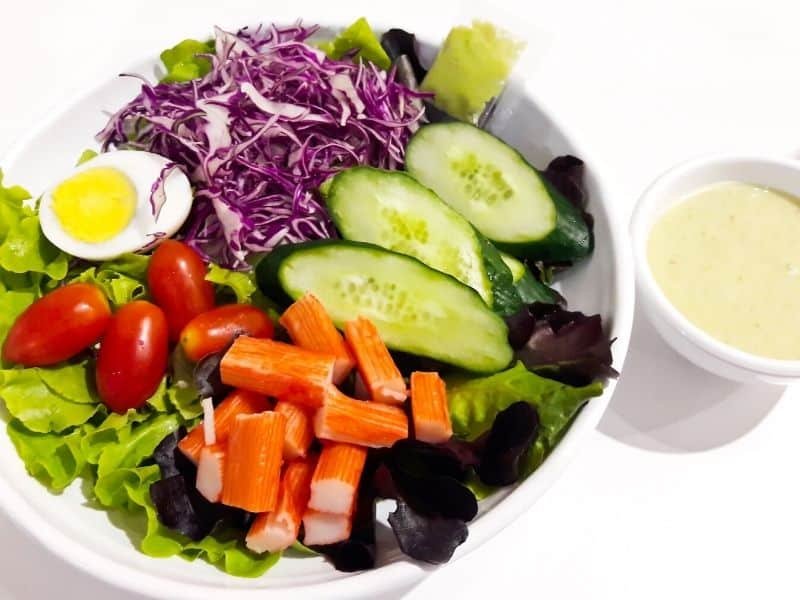
Crab sticks are not healthy food. They contain less than 50% seafood and have little polyunsaturated fatty acids (omega-3 fatty acids). Crab sticks may also be high in sodium depending on how they’re made.
Studies show that high phosphate in additives intake can damage blood vessels, making it riskier to have heart disease.
Most crab stick brands do not list ingredients or nutrition facts for their products online because there is no regulation about listing this information on the package.
Crab sticks are not healthy food, but they can be included as an occasional treat if you choose the right brand. However, there isn’t enough nutritional value to eat crab sticks on a regular basis or make them part of your daily diet.
In the US and EU, food allergy labeling is required. There is a risk of an allergic reaction to an ingredient that isn’t properly disclosed.
This means eating overconsumption of crabsticks may be very bad to your health.
Crab Sticks in Diets
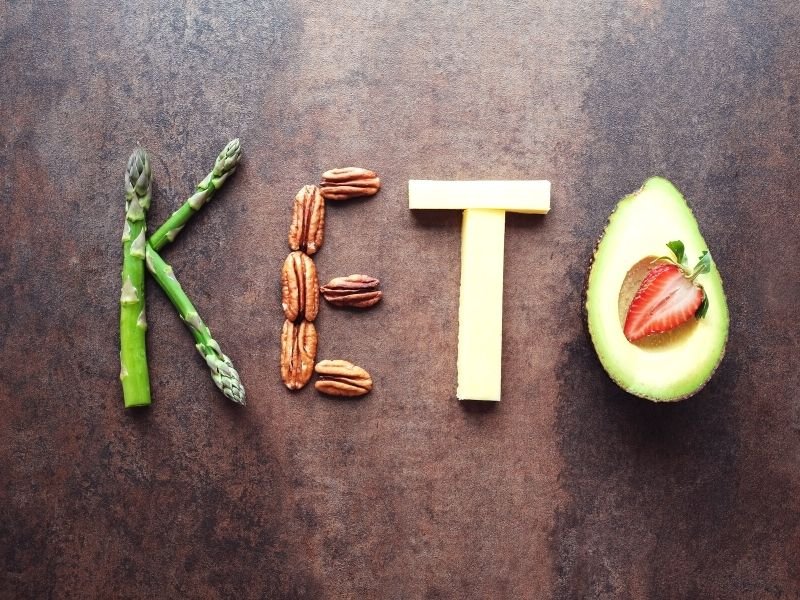
Crab Sticks Good for Keto Diet?
The Keto Diet aims to force your body into using a different type of fuel. Instead of using sugar that comes from food like grains, legumes, vegetables, and fruits, the keto diet relies on ketone bodies. The liver can make them from stored fat.
Imitation Crab is not good for the keto diet because it is a high-carb processed food that contains unhealthy ingredients.
Crab sticks are low in fats and calories. This can help when you want to lose weight.
However, crab sticks are a highly processed food. They contain a lot of salt, starch, and sugars. You should eat them moderately.
Too Much Carbs
Imitation Crab should be avoided on keto because it is very high in net carbs (15g of net carbs per 100g serving).
It is important to limit your net carb consumption to 20g – 30g per day to stay in ketosis. As a substitute, you may look for other types of seafood that have fewer carbs.
Contains Sugar
Sugar is a type of high-glycemic sweetener that will make your blood sugar rise. You won’t be able to get into ketosis if this happens.
As an alternative, look for other types of shellfish like lobster, shrimp, and crab that use keto-friendly sweeteners like stevia, erythritol, or monk fruit.
For Atkins (Low Carb) Diet?
The Atkins diet is a low-carb diet, usually recommended for weight loss.
Proponents of this diet say that you can lose weight while eating as much protein and fat as you want, but if you avoid foods high in carbs.
During the Induction phase, you can only have 20g of carbohydrates a day, so imitation crab meat is not a good idea.
You can add crab sticks to your diet in the 3rd Fine-tuning phase and use them during the Maintenance phase.
For Paleo Diet?
The Paleo diet is similar to the Atkins. However, this one focuses on eating whole foods that are closer to their natural state and do not contain any additives or preservatives.
Imitation crab meat is a highly processed food that contains many additives. This does not fit with this diet.
For Mediterranean Diet?
The Mediterranean diet is a plant-based and healthy way of eating. It includes vegetables, fruits, legumes, nuts, beans, cereals, grains, fish, and unsaturated fats such as olive oil. It usually includes a low intake of meat and dairy foods.
Seafood is a staple of the Mediterranean diet. But imitation crab is a highly processed food with added sugar. So instead of imitation crab, you want to get real crab meat if it’s available.
For Vegan/ Vegetarian?
Even though imitation crab doesn’t have actual crab meat, it is made of fish. It can’t fit into a vegetarian or vegan diet. Some crab sticks contain eggs and a natural dye called carmine. Carmine is made from insects.
Crab sticks are OK for a pescetarian diet. However, in some cases, the surimi in imitation crab can be made from deboned chicken, pork or beef.
For Gluten-free?
Wheat starch is often used as a stabilizing ingredient in the production of imitation crab.
Wheat starch is a carbohydrate that comes from wheat. It should not have any gluten (proteins) or protein in it. People who are gluten intolerant can still get sick from this, though.
However, gluten-free imitation crab can also be found in the market.
Where to Buy Crab Sticks?

Crab sticks can be found in most Asian grocery stores.
They are also available at larger supermarkets and online retailers such as Amazon. Just make sure that you read the ingredients list on each package before buying them.
Some brands may have high amounts of unhealthy chemicals, sugars, or sodium inside.
If you want to add good fats to your diet, try crab sticks from brands that list ingredients and nutrition facts on their packages.
FAQs
Are crab sticks healthy?
Imitation crab is low in calories and fat, which makes it a good food to add to your diet if you are trying to lose weight or watch what you eat.
Choosing foods with low calories and low fat is a way to protect your body. It will help to prevent you from getting chronic illnesses like heart disease.
Are crab sticks bad for cholesterol?
Shellfish contains a lot of amounts of cholesterol, especially when compared to the size it is.
Can you eat crab sticks Raw?
Crab, like all seafood, is rich in protein and iodine, the energy content is 428 kJ per 100g which is not excessive, with a low-fat content of 1.8 g/100g. So except for the cholesterol content of 100 mg per 100g, crab is not a bad option for a diet.
As it is hard to know what fish makeup crab sticks and seafood sticks are, you should not eat the surimi sticks when they are still raw.
The NHS says that it is OK to eat raw or lightly cooked fish. The fish should be frozen first.
Is crab good for high blood pressure?
Crab is high in protein, low in fat and calories. It has less cholesterol than shrimp and contains a variety of vitamins. Crab contains more salt and sodium than shrimp. This may make it not healthy for people who have high blood pressure.
Can you eat crab sticks when pregnant?
Both fake crab and imitation crab are safe to eat during pregnancy, as long as they are well cooked. Making sure you cook your food and seafood well is a good way to protect yourself and the growing fetus from food poisoning.
See also: 10 Delicious Prawn Cocktail Variations





